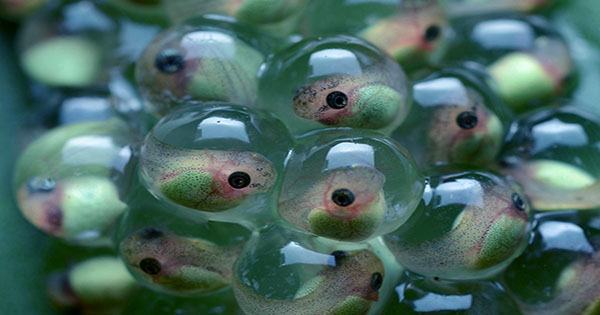An eye-opening study that transformed tadpoles bright green recently discovered that if algae were injected into their brains, tadpoles could survive even when their blood supply to the brain was cut off. Photosynthesis aided the astounding feat since green algae and cyanobacteria supplied to the brain’s blood arteries provided a reliable source of oxygen in the brain. This meant that the tadpole’s brain function was preserved even while it was not breathing. It’s not unheard of for an animal to borrow a plant’s respiratory trick, with the charismatic “Shaun the Sheep” sea slug (Costasiella kuroshimae) having already used chloroplasts in its tissues as a source of energy. This is known as kleptoplasty a process in which a host “steals” chloroplasts from its food and incorporates them into its own cells. The same mechanism could explain how self-decapitating sea slugs’ decapitated heads survive while their bodies regenerate (in case you did not know, all sea slugs are insane).
The goal of this new study, which was published in the journal iScience, was to investigate if it was possible to use photosynthesis to oxygenate the neurons in a tadpole’s brain so that its neural activity might persist even in hypoxic situations. They used a “transcardial injection,” which effectively squirted the algae into the veins that supply the brain, as shown in the video below.
The injected algae then established themselves in the blood arteries of Xenopus laevis tadpoles’ brains, which had been subjected to hypoxic circumstances. The neuronal activity in their brains came to a halt as their blood oxygen levels dropped. The algae that had infested the tadpoles’ brains were able to produce enough oxygen to initiate brain function when the researchers placed a light on them, triggering photosynthesis. While the concept of zombie tadpoles with algae brains surviving without oxygen is obviously fascinating, it also has implications that are more practical.
“This technology would be instantly beneficial for in vitro investigations on brain slices or organoids or any separated tissue from animals where oxygen supply is challenging but required to keep the tissue alive for experimentation,” said Hans Straka, study author. “In the long term, algae could help provide more oxygen in the event of respiratory difficulties; nevertheless, application methods must be improved, immunological reactions defined, and hazardous reactions ruled out.”
Hypoxia can occur in the human body after an accident or a heart attack when the blood fails to give enough oxygen to the brain. As a result, the length of an ambulance ride can mean the difference between life and death, or permanent loss of neurological function as the brain begins to die. This injury could be avoided if a therapy involving injecting brain algae and shining light could bridge the distance between the accident scene and the operation room.
















